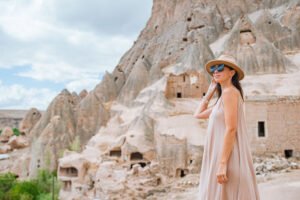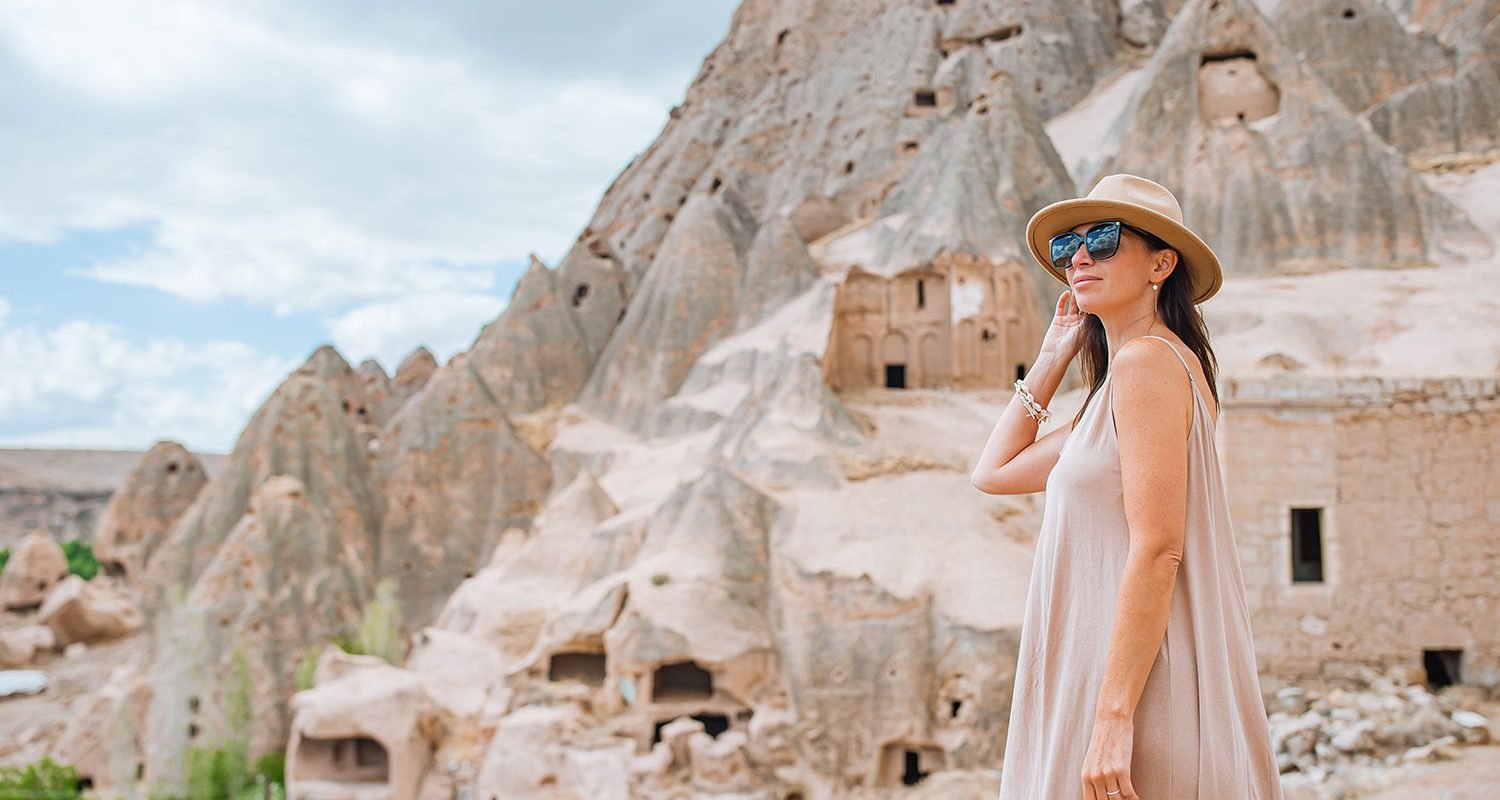Hi, I’m Sirman, and if there’s one thing that truly defines me, it’s my love for traveling. I don’t just travel to see places; I travel to feel them — to soak in their culture, breathe their stories, and walk alongside their centuries-old memories. Traveling is not just a hobby for me; it’s a way of living, learning, and constantly discovering something new about the world — and about myself.
This time, my journey took me back home — not just as a visitor, but as an explorer. And today, I’m excited to share my 3 days trip to Bihar Patna, where I explored one of the most historically significant destinations in India: Vaishali, known as the birthplace of democracy, and a pivotal center for Buddhism, Jainism, and ancient Indian politics.
Through The Explorer by HOV, my mission is to uncover hidden gems, highlight lesser-known stories, and make exploration deeply enriching, inclusive, and exciting. This journey was the perfect reflection of that mission.
Let’s begin.
Day 1 – Boarding the Train from Delhi to Patna
The excitement began the moment I packed my bags. There’s something magical about Indian railway journeys — the chaos, the chai vendors, the rhythmic sound of wheels, and the conversations with strangers who feel like old friends by the time you arrive.
As I sat near the window, watching the landscapes shift from bustling cities to rural serenity, I felt the traveler within me awaken — once again. The thought that I was about to explore the roots of democracy, spirituality, and ancient civilization sent chills down my spine.
By the time my train reached Patna Junction, I felt not tired, but thrilled. Patna always welcomes with a unique vibe — busy streets, delicious aroma of local food, and the warmth of home.
After checking into my stay, I spent the evening exploring Patna’s streets, sipping hot tea, and mentally preparing myself for the next day’s journey — Vaishali.
Day 2 – Journey to Vaishali: Exploring the World’s First Republic
Did you know?
Around the 6th–5th century BCE, Vaishali was the capital of the Vajji Confederacy, and historians consider it among the world’s first republics.
We think of democracy as a modern concept, but Vaishali’s political system had assemblies, elected representatives, and decision-making councils 2,500+ years ago.
As someone fascinated by culture and history, this fact alone made this visit unforgettable.
How to Reach Vaishali
Vaishali is:
- ~50 km from Patna
- Well connected by road
- Accessible via nearby railway stations like Hajipur
- Close to Jay Prakash Narayan International Airport in Patna
The drive from Patna is scenic, passing through rural Bihar, lush fields, roadside vendors, and glimpses of daily life that remind you how deeply India’s soul lies in its villages.
The Ashokan Pillar – A Timeless Symbol of Mauryan Brilliance
My first stop was the famous Ashokan Pillar — a gleaming reminder of Emperor Ashoka’s dedication toward Buddhism and peace. Erected around the 3rd century BCE, the pillar stands 22 feet tall, carved out of polished sandstone so perfectly that it still reflects sunlight.
Touching it felt like time-travel. You can almost imagine Ashoka’s royal craftsmen chiseling this monument as an offering to history.
The lion capital atop the pillar (similar to India’s national emblem) symbolizes power, courage, and responsibility. Standing there, I felt overwhelmed — how many rulers, monks, travelers, and philosophers had stood right where I was now?
Kutagarshala Vihara – Where Buddha Gave His Last Sermon
Next, I walked toward Kutagarshala Vihara, a sacred site for Buddhists worldwide.
This is where Gautama Buddha delivered his last sermon, hinting at his approaching parinirvana. The silence here is heavy — peaceful yet deeply emotional.
As I sat on the grass, with ancient ruins surrounding me, a breeze gently brushed past. It reminded me that simplicity often carries the deepest truths. The teachings of Buddha — compassion, mindfulness, equanimity — are rooted in India’s soil.
No matter where we travel, peace is always within.
Relic Stupa – A Sacred Resting Place
The Relic Stupa is believed to house Buddha’s relics. Archaeologists uncovered remnants here — pottery, terracotta figurines, and coins. The fact that these items survived thousands of years shows how advanced Vaishali was.
The walls, pathways, and brick structures exhibit urban planning ahead of its time:
- Drainage systems
- Fortifications
- Wide streets
- Official gathering spaces
Walking among these excavated ruins, I realized how incredibly progressive ancient India was.
Coronation Hall (Vajji Assembly Hall) – The Birthplace of Democratic Ideals
One of the most intellectually thrilling sites in Vaishali is the Vajji Assembly Hall — the ceremonial spot where chiefs and representatives gathered to make decisions.
They discussed:
- Trade
- Laws
- Administration
- Security
- Diplomacy
This was democracy in action, thousands of years before modern constitutions.
Standing on that land, I closed my eyes and imagined leaders debating respectfully, citizens voicing concerns, and decisions taken collectively. It felt unreal yet inspiring.
Vaishali’s Jain Connection – Birthplace of Lord Mahavira
Vaishali is not only vital to Buddhist history; it’s also cherished in Jainism. This is the birthplace of Lord Mahavira, the 24th Tirthankara.
His teachings of non-violence and truth remain relevant today.
As I explored temples dedicated to him, I felt the spiritual harmony that Vaishali nurtured — accepting diverse faiths with open arms.
Archaeological Museum – Treasures of the Past
If you love archaeology (like I do), Vaishali’s museum is a must-visit. It showcases:
- Coins from the Vajji era
- Pottery fragments
- Terracotta seals
- Carvings
- Tools
- Relic containers
They reflect:
- Trade relations
- Economic growth
- Artistic brilliance
The ancient seals particularly fascinated me — imagine something stamped thousands of years ago surviving until today!
Cultural Legacy – Where Ideas Became Movements
Vaishali isn’t just a pile of ruins; it’s a living symbol of:
- Leadership
- Liberal thinking
- Gender respect
- Education
- Freedom
Historical texts mention that women here held high status and participated in public assemblies. How progressive is that!
This city embraced:
- Buddhism
- Jainism
- Democratic governance
- Trade networks
All under one skyline.
Local Food Experience – Taste of Bihar
No travel experience is complete without food, right?
After exploring Vaishali, I indulged in:
- Litti Chokha
- Khaja
- Malpua
- Thekua
- Hot piping chai with sattu
Bihar’s food isn’t just flavorful; it’s soulful.
Sitting at a local stall, sharing a plate with strangers, felt like embracing the heart of Bihar.
My Bihar Patna Trip Experience – Final Thoughts
My Bihar Patna travel experience taught me something profound:
Sometimes, the greatest treasures are hidden in places we often overlook.
Vaishali, with its democracy, philosophy, and innovation, stands as evidence that India has always been centuries ahead in thought and culture.
Many travelers rush toward popular destinations, but sometimes the most impactful journeys are those into forgotten lanes of history.
Why You Must Explore Vaishali
Here’s why Vaishali deserves a spot on your travel wishlist:
- One of the world’s first republics
- Key Buddhist heritage site
- Birthplace of Lord Mahavira
- Rare Ashokan pillar
- Ancient urban planning ruins
- Quiet, untouched, raw beauty
If you enjoy history, spirituality, culture, or archaeology — this place will touch your soul.
Travel Tips
- Visit during winter (October–February)
- Hire a local guide
- Carry water & snacks
- Spend time at each site — don’t rush
- Visit nearby markets
Trust me — you’ll come back richer in experience.
Conclusion – The Spirit of Exploration
Through The Explorer by HOV, our mission is to inspire journeys that connect past and present. We believe exploration isn’t just outward — it’s inward too.
Visiting Vaishali made me appreciate:
- The roots of our democratic values
- The depth of our spiritual heritage
- The brilliance of ancient Indian minds
- The richness of Bihar’s cultural legacy
Travel isn’t about ticking destinations off a checklist. It’s about transforming perspectives.
As I boarded my train back, I didn’t just leave Vaishali — I carried its story with me.
And now, I’m sharing it with you.
So pack your bags. Visit Bihar. Explore Patna. Witness Vaishali.
Ancient India is calling — are you ready to answer?
Until my next journey,






